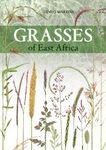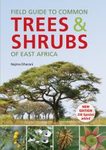Field / Identification Guide Identification Key
Out of Print
By: Andrew DQ Agnew(Author)
733 pages, 203 plates with b/w line drawings; 1 b/w map
![Upland Kenya Wild Flowers and Ferns Upland Kenya Wild Flowers and Ferns]()
Click to have a closer look
About this book
Customer reviews
Biography
Related titles
Recommended titles
About this book
First published in 1974, with a revised and expanded edition in 1994, researchers and naturalists have for decades taken Upland Kenya Wild Flowers and Ferns with them to the mid and high altitude parts of Kenya.
The author is now in his 80s and retired in Wales, UK. He taught botany at the new University of Nairobi soon after Independence. The flora of Kenya had not yet been fully documented, and Dr Agnew set out to produce a book of keys to help the botanist, collaborating with researchers at the East African Herbarium in Nairobi and the famous Kew Herbarium in Britain.
Over a thousand species of plants are illustrated in Upland Kenya Wild Flowers and Ferns, but they are drawn in black and white, except for the beautiful paintings by Dino Martins on the cover. So to use this book, the reader has to go beyond the flower's colour. Experienced botanists will use the keys, the series of paired questions that lead you, step by step, through the features of the plant.
This third edition includes grasses and sedges as well as ferns and flowers, making it particularly useful for managers of rangeland and parks. Upland Kenya Wild Flowers and Ferns does not include trees, shrubs or garden plants, nor does it cover coastal species. While the vast majority of plant species described are indigenous, common weeds are included, giving you a high chance of identifying any non-woody plant you come across in upland Kenya.
Customer Reviews (1)
-
Useful ID resource for Kenyan herbaceous plants
By
David
2 Sep 2015
Written for Paperback
I've used the 2nd edition of this book (Agnew & Agnew 1993 "Upland Kenya wild flowers", which lacked grasses & sedges) & also provisional keys to grasses & sedges given to me by Dr. Agnew in the late 1990s, when he was clearly preparing this new edition. The bottom line is that I was able to identify species in the field using these sources: they work! I have not seen the new edition, but, in the absence of any other review, thought this review might help anyone unfamiliar with floras for this area. For non-herbaceous species not covered by Agnew's books, Henk Beentje's (1994) "Kenya trees, shrubs & linaas" Nairobi: National Museums of Kenya (9966-9861-0-3) is also extremely useful, but sadly out of print.
1 of 1 found this helpful
-
Was this helpful to you? Yes No
Biography
Andrew Agnew has taught students the fascination of plant ecology and taxonomy in Dundee, Baghdad, Nairobi and Aberystwyth. He taught botany and ecology at the University of Nairobi from 1963 to 1969, when the first edition of this book was prepared and was president (chairman) of the East Africa Natural History Society from 1967 to 1969. Now retired, Andrew and his wife, Janie, live in Wales but he has not lost his enthusiasm for field botany and had great fun making frequent visits to Kenya to complete this Third Edition. Andrew has three sons, now living on two continents.





























